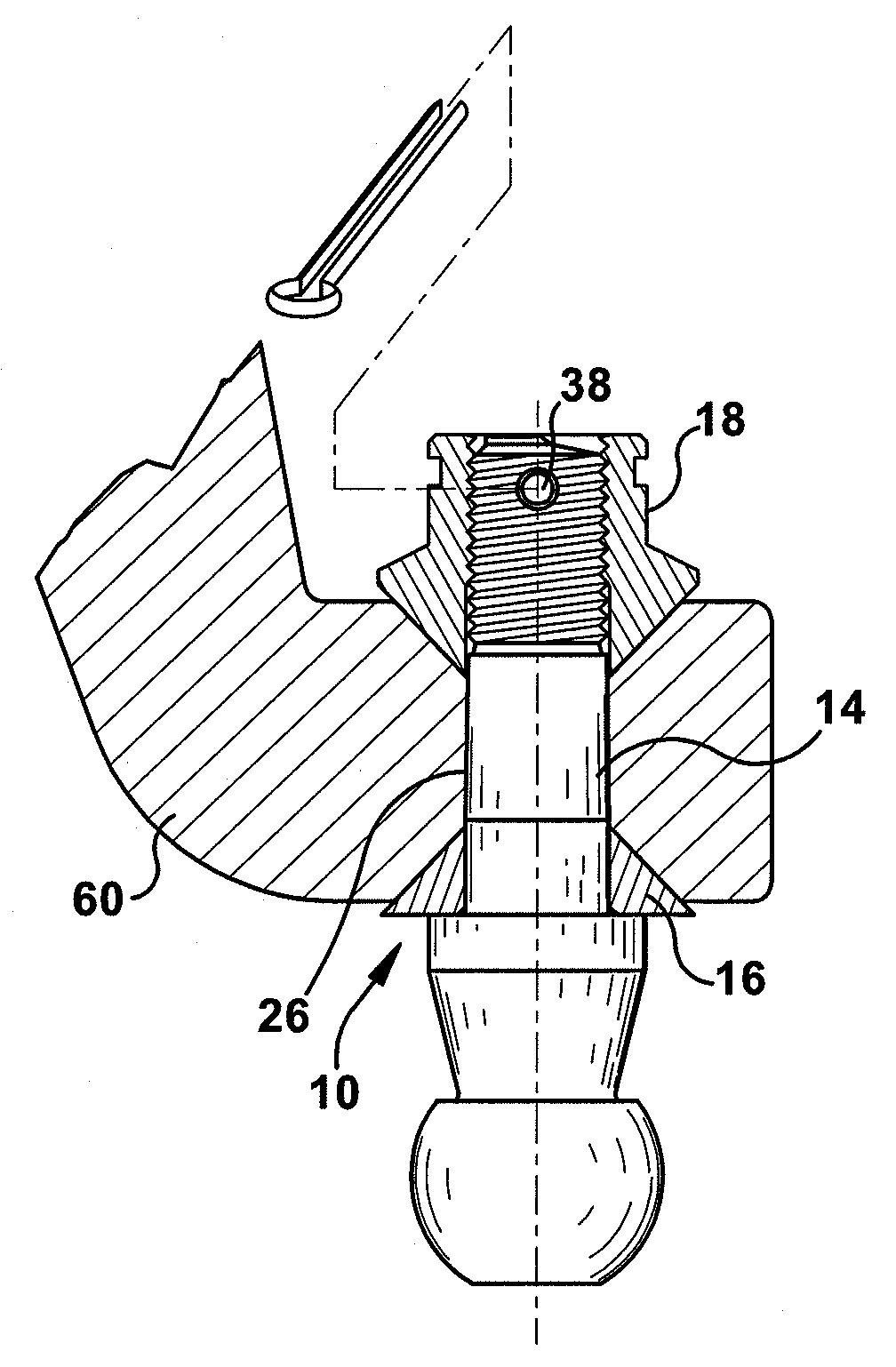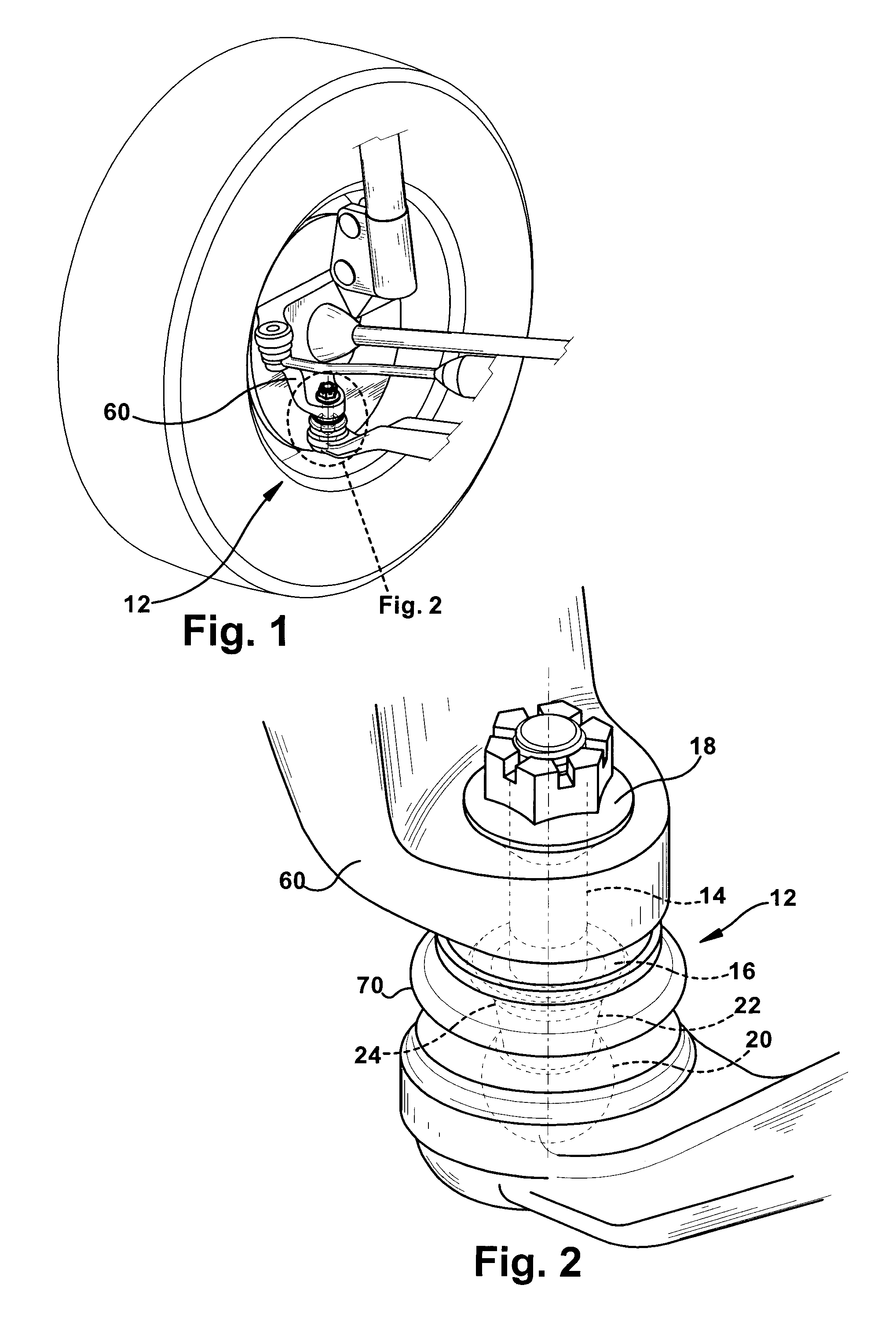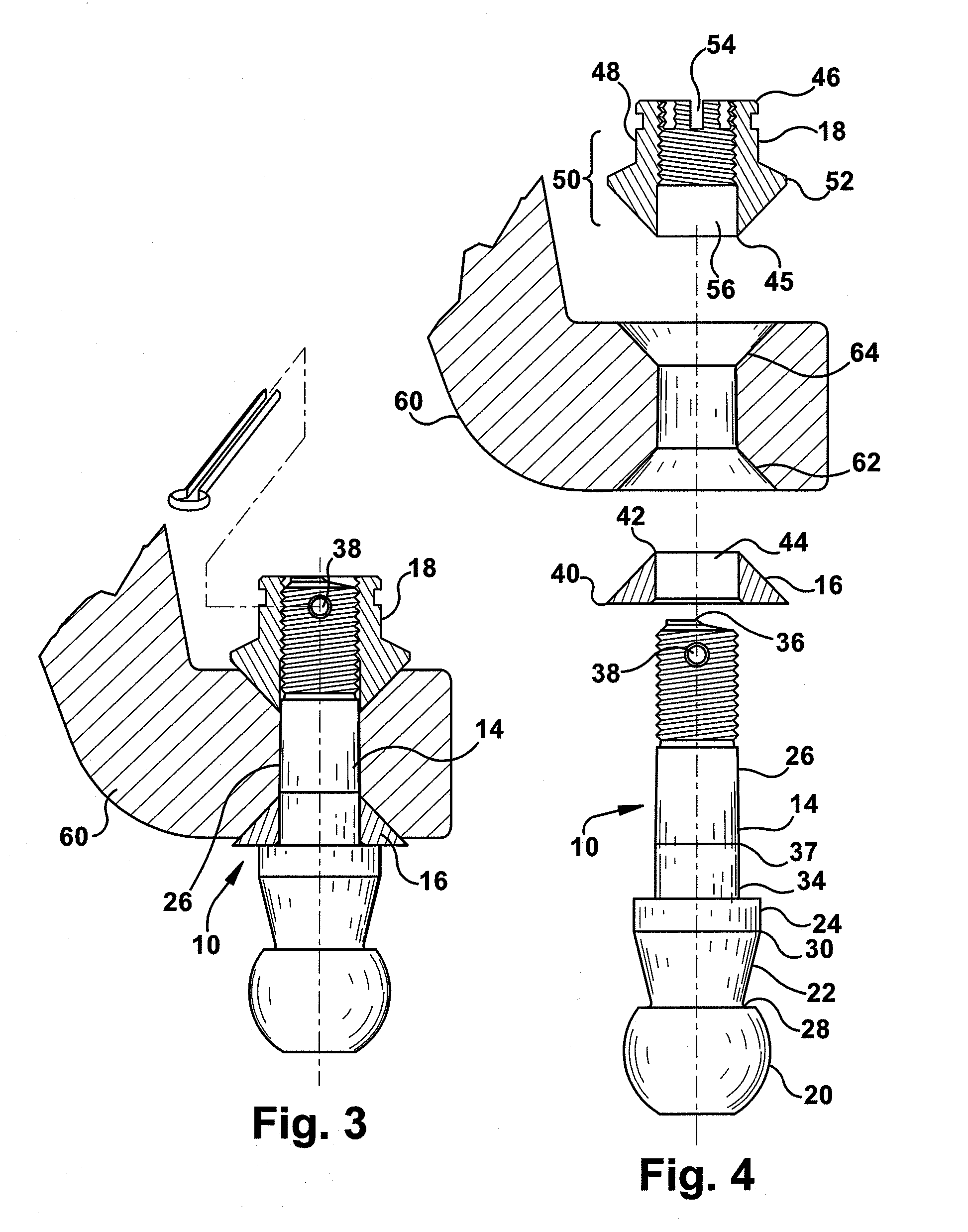Ball stud system for use within a ball joint
a technology of ball studs and studs, which is applied in the direction of threaded fasteners, screwdrivers, couplings, etc., can solve the problems of joint failure, nut slipping laterally along the flat face of the steering knuckle, and loss of torque in the nut that holds the stud in place, etc., to achieve less surface contact pressure, and better sealing structure
- Summary
- Abstract
- Description
- Claims
- Application Information
AI Technical Summary
Benefits of technology
Problems solved by technology
Method used
Image
Examples
Embodiment Construction
[0017]Schematically, and in a very simplified manner, FIGS. 1-4 show an exemplary embodiment of a ball stud system 10 according to the present invention for use within a vehicle ball joint 12. The ball stud 14 is not easily loosened during normal operation of the vehicle, i.e. torque within the nut securing the ball stud in place is not lost easily. The ball stud system 10 includes a ball stud 14, tapered washer 16 and tapered nut 18.
[0018]Referring to FIG. 4, the ball stud 14 is preferably formed from steel and includes, from the bottom up, a ball 20, a tapered neck 22, a shoulder 24, and a pin 26, all integrally formed. The preferred material of construction for the washer 16 and nut 18 is also steel. The ball 20 has a known generally spherical shape which merges at its top into an adjacent neck 22. At the bottom of the ball 20, the spherical shape, preferably, is truncated. The neck 22 is a truncated cone with a proximal end 28, adjacent the ball 20, having a smaller diameter tha...
PUM
 Login to View More
Login to View More Abstract
Description
Claims
Application Information
 Login to View More
Login to View More - R&D
- Intellectual Property
- Life Sciences
- Materials
- Tech Scout
- Unparalleled Data Quality
- Higher Quality Content
- 60% Fewer Hallucinations
Browse by: Latest US Patents, China's latest patents, Technical Efficacy Thesaurus, Application Domain, Technology Topic, Popular Technical Reports.
© 2025 PatSnap. All rights reserved.Legal|Privacy policy|Modern Slavery Act Transparency Statement|Sitemap|About US| Contact US: help@patsnap.com



